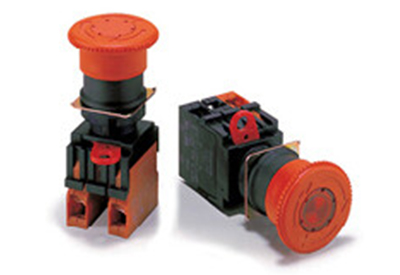Five Essential Requirements for the Behavior of Emergency Stop Devices

April 14, 2020
Emergency stops are a must-have for any safety system, as they are often the last resort for stopping or mitigating a major accident on the factory floor. We’ve discussed the specific requirements for the layout, color and shape of an E-stop pushbutton in a previous blog post, but there are also several requirements for E-stop behavior that we will go over now.
1. The E-stop must have positive operation.
Emergency stops must be designed so that, upon their activation, dangerous movements and operations of the machine will be stopped as quickly as possible without creating additional hazards. If they aren’t activated, then the machine must stay running by default. This is what’s meant by “positive operation.”
2. The E-stop function must be available and in operation at all times.
At every operator station, there must be an emergency stop ready to be activated whenever necessary. The effects of an E-stop – namely, the ceasing of hazardous machine motion – must be maintained until the device can be manually reset according to ISO 13850-2006. This prevents machinery from starting up prematurely while the situation is being investigated.
3. There can’t be a padlock on the E-stop.
Having a padlock on the emergency stop device gives the impression of lockout/tagout (LOTO), which is a terrible application for an E-stop. Requirements for lockout stipulate that the hazardous energy sources must be physically isolated or blocked, and control systems that include interlocks and emergency stops are unable to meet these requirements in full.
4. The E-stop shouldn’t stand in for other necessary safety measures.
Key safeguarding measures and functions such as light curtains, interlock devices and comprehensive safety training for operators must not be overlooked simply because an emergency stop is in place. These measures are just as important and should always be part of the risk reduction strategy for a machine.
5. The E-stop should ideally be activated just twice per year.
Assuming that there’s no need to stop hazardous motion in a given year, then the emergency stop should only be activated twice over this time period for the purpose of manual testing. Some manufacturers set things up so that operators use the E-stop for routine machine shutdowns, but this is a standards violation and will lead to the early breakdown of the device.















